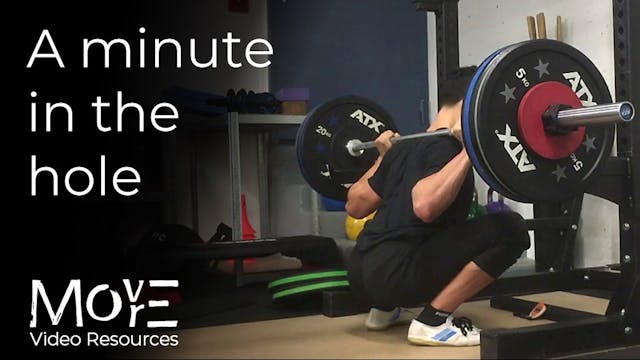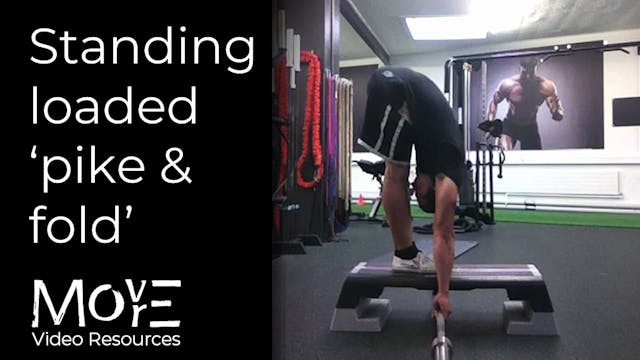The 'Active' Squat
Weighted mobility development
•
4m 11s
THE WHAT:
The 'Active' squat is a form which is structurally sound to receive load and produce force from (e.g. as in the context of performing a 'Back squat'). Compared to the ‘Passive-squat’, in terms of range it requires LESS knee, hip, and ankle-flexion, although their development is still affected due to the innate intention of the structure and the executional options under bodyweight an optional external-loading.
Whilst teaching a fundamental weight-training form, then, spending time with the ‘Active squat’ is also a great introductory hip & squat-mobility development context for those significantly restricted in the ‘passive-squat’ form.
LEARN MORE (subscriber-only):
Ihttps://drive.google.com/file/d/1MQlli0H95wu3hfaZSssspau5_Q01g_MQ/view?usp=drive_link
__________________________________
For programming, guidance, & support for your physical practice:
FREE fundamental prehabilitation program: https://www.movemoremp.com/
Online Support (1 to 1 coaching): https://movemoremp.com/onlinesupport/
Elements (standardised programs): https://www.movemoremp.com/elements
[email protected]
Up Next in Weighted mobility development
-
"A Minute in the Hole" - loaded squat...
THE WHAT & HOW:
A static frame for experiencing, and accustoming to, prolonged stress, both physical & psychological, in the ACTIVE squat position (i.e. bottom position of back squat). Choose a weight that allows you to maintain your form throughout - do NOT let your form & structure deteriorate.... -
Loaded-pike & Squat stretch
THE WHAT:
A loaded mobility context focused on developing front-folding range in both 'pike' and 'squat' forms. Whilst the loaded 'pike' phase of the movement emphasises range-development of the posterior chain (namely range of posterior-legs & lumbar-flexion), the 'squat' phase loads external HI... -
Standing loaded 'pike & fold'
THE WHAT & WHY:
A simple loaded front-folding context which comes into its own when the variation holding the bar UNDER the step is available. When you find yourself on the "edge" of this range, the bar can then be used to "block" against the underside of the step and to pull against into even de...



